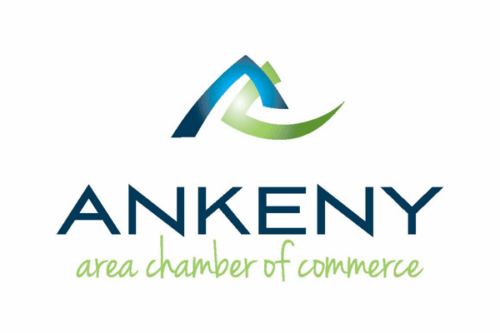For associations and nonprofits, external collaborations are a powerful way to achieve goals, expand reach, and create lasting impact. Two common strategies for collaboration are partnerships and sponsorships.
While these terms are often used interchangeably, they serve distinct purposes and offer different benefits. Understanding the differences between partnerships and sponsorships is crucial to making informed decisions that align with your organization’s goals.
In this article, we’ll define what partnerships and sponsorships are, explore the key differences between them, and provide guidance on when to choose each option to maximize your organization’s impact.
What is a Partnership?
A partnership is a collaborative relationship between two or more organizations working together to achieve shared goals. Partnerships are often long-term and involve deeper collaboration, where all parties contribute resources, expertise, and effort for mutual benefit.
Main Characteristics of Partnerships
- Collaborative and Strategic: Partnerships focus on joint efforts that align with both organizations’ missions.
- Long-term Relationships: Partnerships typically last for extended periods, fostering trust and shared growth.
- Mutual Benefits: Unlike sponsorships, partnerships aren’t transactional; they aim to create value for all parties involved.
- Shared Goals and Resources: Both organizations work together to achieve common objectives and may pool resources like funding, knowledge, or manpower.
Partnership Examples:
- Co-hosting an Industry Event: Two organizations collaborate to organize a conference, combining their networks and expertise to attract a larger audience.
- Joint Advocacy Campaign: Partnering with another group to promote shared causes, such as environmental sustainability or public health initiatives.
- Shared Research Projects: Working together on studies or reports that benefit both parties and their stakeholders.
Partnerships are ideal for organizations looking to build deeper relationships and achieve long-term, strategic goals through collaboration.
What is a Sponsorship?
A sponsorship is a transactional relationship where one organization provides financial or in-kind support to another in exchange for specific benefits, such as visibility or brand promotion. Sponsorships are typically short-term arrangements designed to deliver measurable returns for the sponsor while supporting the recipient’s activities or events.
Key Characteristics of Sponsorships
- Transactional Relationship: Sponsorships are primarily focused on an exchange of value—usually financial support or resources for marketing exposure.
- Short-term Commitment: Sponsorships are often tied to a specific event, campaign, or timeframe, making them more temporary compared to partnerships.
- Brand Exposure for the Sponsor: The primary goal for sponsors is often visibility, including logo placement, mentions, or access to the recipient’s audience.
- Clear Deliverables: Sponsorship agreements outline specific benefits provided to the sponsor, such as advertising opportunities or on-site recognition.
Examples of Sponsorships
- Event Sponsorship: A company provides funding for an annual gala in exchange for their logo appearing on promotional materials and signage.
- Product or Service Donations: A business donates items like food, technology, or services to a fundraiser and is recognized as a sponsor.
- Advertising Sponsorship: A sponsor pays to have their ad featured in a nonprofit’s newsletter, social media, or website.
Sponsorships are an excellent option when your organization needs immediate financial or resource support for a specific initiative. They also provide sponsors with opportunities to enhance their brand visibility and engage with your audience.
How are Partnerships and Sponsorships Different?
When deciding between a partnership and a sponsorship, it’s important to recognize the differences in how each relationship works and what it can bring to your organization. While both are valuable, they serve different purposes and require different levels of commitment.
Nature of the Relationship
Partnerships are built on collaboration and shared goals. They’re designed to create mutual benefits by pooling resources, expertise, and ideas. Sponsorships, on the other hand, are more transactional. A sponsor provides financial or in-kind support in exchange for specific benefits, such as brand visibility or access to your audience.
Duration
Partnerships are often long-term commitments. They involve ongoing collaboration, making them ideal for organizations looking to build lasting relationships. In contrast, sponsorships are usually tied to a specific event, campaign, or timeframe, making them a more temporary arrangement.
Goals
The primary goal of a partnership is to achieve something meaningful together, whether that’s co-hosting an event, launching a new program, or addressing a shared cause. Sponsorships focus more on promoting the sponsor’s brand or products while supporting your organization’s efforts.
Level of Involvement
Partnerships typically involve active participation from both parties, with shared responsibilities and decision-making. Sponsorships are more hands-off, with the sponsor’s role limited to fulfilling the agreed-upon terms, such as providing funding or resources.
Primary Benefits
With a partnership, the benefits extend beyond the immediate project. You’re building trust, expanding your network, and setting the stage for long-term success. Sponsorships, however, offer immediate support and help your organization gain visibility, especially when the sponsor actively promotes their involvement.
By understanding these key differences, you can better determine which type of relationship aligns with your organization’s goals and the resources you have available. Whether you’re looking for a collaborative ally or a supportive sponsor, knowing what to expect can help you make the right choice.
Benefits of Partnerships
Building a partnership offers associations and nonprofits opportunities for meaningful collaboration that can create long-lasting impact. When two organizations align their goals and pool their resources, the results often go far beyond what either could achieve alone.
Key Benefits of Partnerships
- Deeper Collaboration: Partnerships allow you to work closely with another organization, creating shared strategies and initiatives that align with both missions.
- Access to Expertise and Resources: By partnering with another group, you can tap into their knowledge, skills, and networks, amplifying your organization’s capabilities.
- Increased Credibility: A partnership with a respected organization can enhance your reputation and demonstrate your commitment to shared goals.
- Long-term Growth: Partnerships often lead to sustained relationships, opening doors to future collaborations and larger opportunities.
- Shared Risk and Responsibility: By working together, you share the workload, financial commitment, and potential risks, making ambitious projects more feasible.
Imagine partnering with a local business to create a joint program promoting literacy. They provide funding and volunteers, while your organization contributes educational expertise. Together, you could create a program that reaches more people and has a greater impact than either could achieve alone.
Benefits of Sponsorships
Sponsorships are a fantastic way to secure immediate support for your organization while providing sponsors with valuable exposure to your audience. For nonprofits and associations, sponsorships are often an essential part of funding events, campaigns, or initiatives.
Key Benefits of Sponsorships
- Financial Support: Sponsorships provide a reliable source of funding for specific projects, events, or initiatives.
- In-kind Contributions: Sponsors can offer valuable resources, such as equipment, supplies, or services, which reduce costs for your organization.
- Enhanced Visibility: Sponsors often promote their involvement through their own marketing channels, increasing exposure for your organization.
- Simpler Agreements: Compared to partnerships, sponsorships typically involve straightforward terms, making them easier to establish and manage.
- Stronger Event Appeal: High-profile sponsors can attract more attendees or participants to your events, boosting success and visibility.
For example, imagine a corporate sponsor provides funding for your annual fundraiser in exchange for logo placement on event materials, recognition during the program, and a booth at the venue. This arrangement offers immediate financial support for your event while giving the sponsor a valuable platform to promote their brand.
When to Choose a Partnership
A partnership is the right choice when your goals align deeply with another organization, and you’re looking to build a collaborative relationship that delivers long-term value. Partnerships work best when both parties are committed to working together toward shared objectives.
When to Choose a Partnership
- Shared Vision: You and another organization have complementary missions and can achieve more together than independently.
- Ongoing Initiatives: Your collaboration involves long-term projects or recurring activities, such as co-hosted events or joint programs.
- Resource Sharing: Both organizations can contribute unique expertise, networks, or assets to achieve mutual goals.
- Strategic Growth: You want to build a deeper relationship that fosters trust and opens the door to future opportunities.
For example, if a trade association partners with a research firm to create industry reports, both parties benefit from the partnership. The trade association gains valuable insights, and the research firm accesses a broader audience.
When to Choose a Sponsorship
Sponsorships are ideal for short-term needs or specific initiatives where financial or resource support is the primary goal. If your organization can provide visibility and promotional value to a sponsor, this type of relationship can be highly effective.
When to Choose a Sponsorship
- Event Funding: You need financial backing to host a conference, trade show, or seminar.
- Short-Term Collaboration: The relationship is tied to a single campaign, event, or activity rather than a long-term effort.
- Promotional Opportunities: Your organization can offer valuable brand exposure to sponsors through marketing materials, signage, or attendee engagement.
- Resource Needs: A sponsor can provide products or services that reduce costs, such as donating equipment for an event.
For instance, a trade association might seek sponsorship from a leading industry supplier for its annual trade show. In return for financial support, the sponsor receives prominent logo placement, a booth at the event, and recognition during key sessions. This arrangement delivers immediate benefits for both parties.
Closing Thoughts
Deciding between a partnership and a sponsorship is a critical step for associations and nonprofits looking to maximize their resources and achieve their goals. Partnerships offer long-term collaboration and mutual growth, making them ideal for organizations with shared visions and ongoing initiatives. Sponsorships, on the other hand, provide immediate support and promotional opportunities, which are perfect for short-term needs or specific events.
By understanding the differences and benefits of each, you can make informed decisions that align with your mission and strategy. Take the time to assess your goals, evaluate potential collaborators, and consider the level of involvement each relationship requires. Whether you choose a partnership, a sponsorship, or a combination of both, these relationships can significantly enhance your organization’s impact and success.
Ready to explore your options? Start building meaningful relationships that drive your mission forward today!
















